Zirconia Abutment: A Comprehensive Guide for Dental Clinics
Zirconia abutments have revolutionized the dental implant industry with their unique combination of strength, aesthetics, and biocompatibility. This article explores the essential aspects of zirconia abutments, their advantages, and why they are a preferred choice for dental professionals worldwide. If you’re considering incorporating zirconia implant abutments into your dental practice, keep reading to understand their full potential.
When to Choose a Zirconia Abutment for a Dental Implant
The primary reason to opt for zirconia abutments is when patients have thin gingival biotypes. Thin gingival tissues can reveal the gray color of titanium implant abutments, especially at the cervical region of the implant restoration. This translucency issue arises because thin gingiva cannot adequately block light reflections from metal components, potentially diminishing the restoration’s overall aesthetic quality, even if the crown is meticulously crafted.
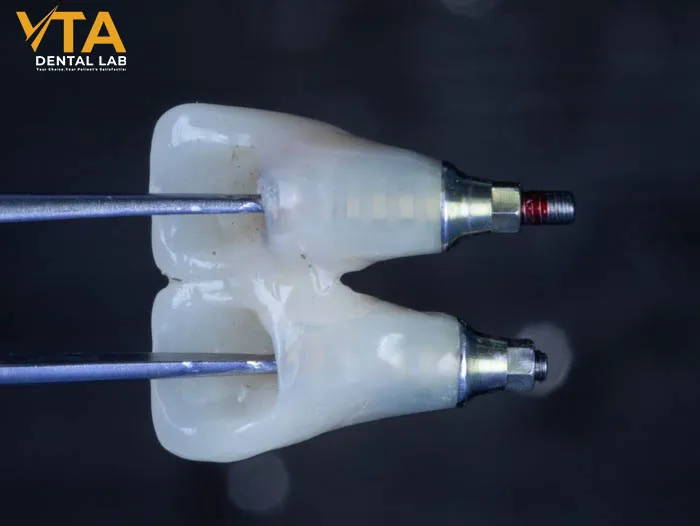
A straightforward method to determine whether a patient has a thin gingival biotype is by inserting a periodontal probe into the gingival sulcus. If the probe is easily visible through the tissue, the patient likely has a thin gingiva. In such cases, using zirconia abutments ensures superior aesthetics by harmonizing with the patient’s natural gingival contours.
Benefits of Choosing Zirconia Implant Abutments
High Biocompatibility
Zirconia implant abutments resist plaque and bacterial buildup, promoting long-term gingival health and excellent biocompatibility. Additionally, zirconia’s capacity for osseointegration contributes to durability and success in dental implants.
Durability of Zirconia Abutments
A common concern among dental professionals is whether zirconia implant abutments are prone to fractures. These abutments are designed with exceptional resistance to wear, fractures, and corrosion, ensuring durability for long-term use.
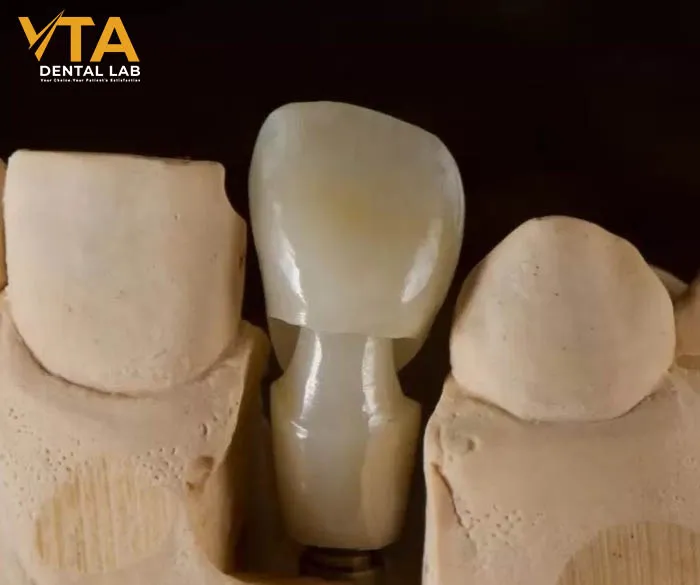
Aesthetic Appeal
One of the most remarkable benefits of zirconia abutments is their natural, tooth-like appearance. Their white color closely mimics natural teeth, making them ideal for anterior restorations. Patients value this aesthetic quality, especially in obvious areas of the mouth where traditional metal abutments may fall short. This advantage helps patients regain confidence in their smiles
Flexibility in Design
Another significant benefit of zirconia implant abutments is their design versatility. They can be tailored to suit various implant systems and customized to meet the specific anatomical needs of individual patients. This adaptability allows dental practitioners to provide personalized solutions, ensuring optimal fit, functionality, and aesthetic results for every case.
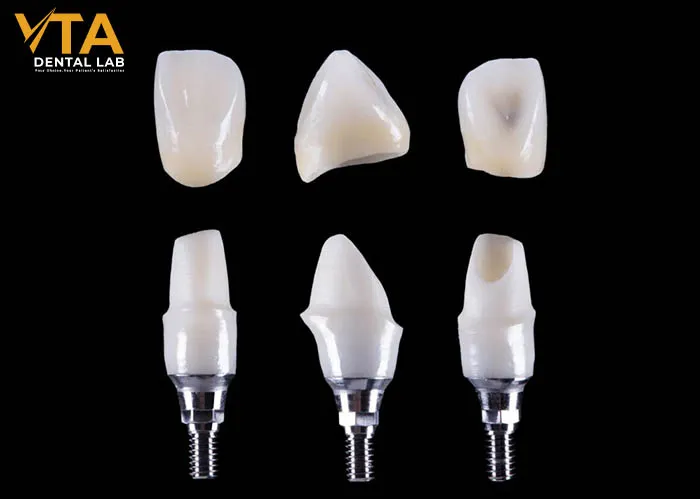
Applications of Zirconia Abutments
Zirconia abutments are particularly favored in the anterior region of the mouth, where aesthetics are paramount. Their tooth-like color ensures seamless integration and aesthetic harmony, especially when gingival recession occurs. This feature makes them an ideal choice for anterior tooth restorations.
In complex clinical cases, zirconia abutments can be precisely designed to fit specific implant systems and address patients’ unique needs. This flexibility allows dental practitioners to deliver personalized treatment plans, ensuring the best possible outcomes.
Zirconia Abutments vs. Titanium Abutments
When comparing zirconia and titanium abutments, understanding their distinct advantages is crucial for selecting the right solution for your patients. Zirconia abutments are known for their superior aesthetic appeal, blending naturally with surrounding teeth, while titanium abutments are valued for their unparalleled mechanical strength.
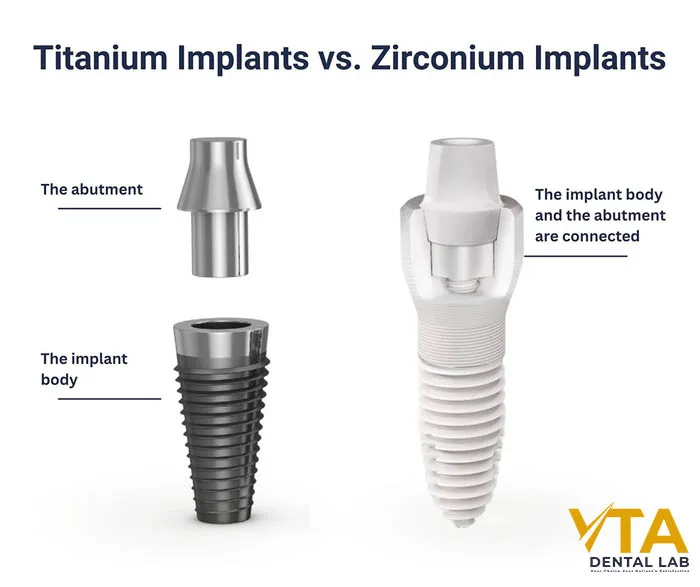
Below is a detailed breakdown to help clarify their differences:
Comparison Factors:
| Feature | Zirconia Abutments | Titanium Abutments |
| Appearance | Tooth-colored, aesthetic | Metallic, less natural |
| Durability | High fracture resistance | Superior mechanical strength |
| Biocompatibility | Ideal for metal-sensitive patients | Generally biocompatible |
| Cost | Higher | More affordable |
How to Choose the Right Zirconia Abutment
Choosing the ideal zirconia abutment for your dental practice requires carefully assessing several factors to ensure optimal outcomes.
Consider Patient Preferences
Patients’ specific needs, such as their desire for natural aesthetics or concerns about metal sensitivities, play a crucial role in the decision-making process. For example, those with allergies to metals might prioritize zirconia’s biocompatibility, while others may value its seamless blend with natural teeth.
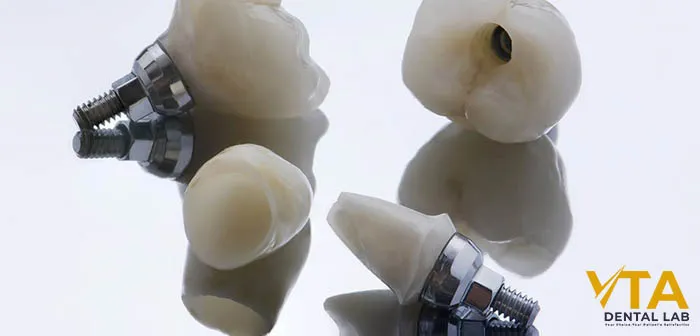
Assess the Clinical Case Type
Evaluate the type of restoration being performed, whether it is a single-tooth implant in the aesthetic zone or full-arch reconstruction. Zirconia abutments are particularly advantageous in anterior restorations due to their natural appearance, while they can also provide sufficient strength for applications.
Collaborate with a Trusted Dental Lab
Partnering with an experienced dental lab ensures precise customization and high-quality fabrication. A trusted ab can help you achieve the ideal fit, design, and functional outcomes for your patients, enhancing the abutment’s effectiveness and aesthetic value.
Conclusion
Zirconia abutments offer a winning combination of aesthetics, durability, and biocompatibility, making them an invaluable component in modern dental implantology. By choosing high-quality zirconia abutments from VTA Dental Lab, you can provide your patients with superior outcomes and elevate your practice. Contact us today to discover how our products can transform your dental implant solutions.